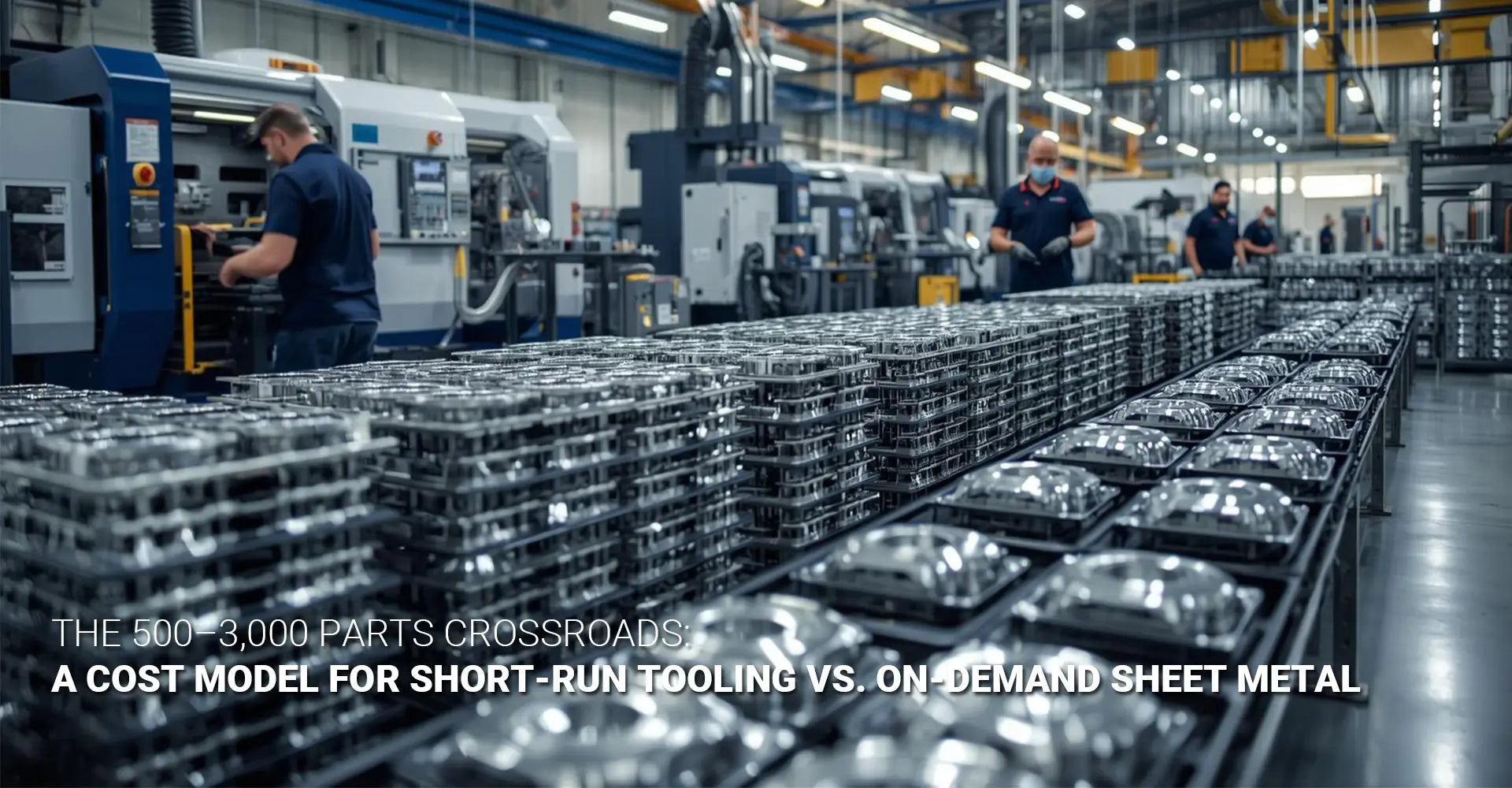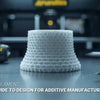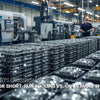Should You Choose Short-Run Tooling or On-Demand Sheet Metal for 500-3,000 Parts?

Should You Choose Short-Run Tooling or On-Demand Sheet Metal for 500-3,000 Parts?

Manufacturing 500 to 3,000 parts puts you in a tricky spot. Therefore, you need to decide between investing in short-run tooling or sticking with on-demand sheet metal fabrication. This decision can make or break your budget. Moreover, it affects how quickly you get to market. Many manufacturers struggle with this choice because both options have real benefits. However, picking the wrong path can cost you thousands of dollars and weeks of lost time.
Quick Answer Guide
Key Takeaways:
- Below 1,000 units: On-demand sheet metal wins due to zero setup costs
- 1,000-3,000 units: Detailed cost analysis required (the decision zone)
- Above 5,000 units: Short-run tooling typically becomes more economical
- Key factor: Your demand certainty determines the best choice
- NRE costs: Range from $3,000-$30,000+ for tooling vs. near-zero for on-demand
- Lead time difference: 3-7 days (on-demand) vs. 4-12 weeks (tooling)
Let's face it: searching online gives you the frustrating answer "it depends" without real numbers. Consequently, you're left guessing which path saves money. This mid-volume production guide cuts through the confusion. Furthermore, we'll show you actual cost comparisons and a clear decision framework. By the end, you'll know exactly which manufacturing method fits your production volume and business needs.
Table of Contents
- What Makes NRE Costs the Biggest Factor in Your Decision?
- How Do the Numbers Compare for 500, 1,500, and 3,000 Units?
- Why Does On-Demand Sheet Metal Beat Tooling on Speed and Flexibility?
- What Non-Cost Factors Should Guide Your Manufacturing Choice?
- Conclusion
What Makes NRE Costs the Biggest Factor in Your Decision?
NRE costs represent the money you spend before making even one part. Therefore, understanding these expenses is crucial for 500-3000 parts manufacturing decisions. Short-run tooling requires significant upfront investment. In contrast, on demand manufacturing services keep initial costs low. This difference shapes your entire production budget.
NRE Cost Breakdown
Understanding the Investment:
- Short-run tooling: $5,000-$25,000 for mold design and fabrication
- On-demand sheet metal: $0-$500 for programming and setup
- Payback requirement: Tooling must produce enough parts to recover investment
- Break-even volume: Typically 1,500-4,000 units depending on part complexity
- Hidden costs: Tool storage, maintenance, and potential modifications
NRE stands for Non-Recurring Engineering costs. Basically, these are one-time expenses that happen before production starts. For short-run tooling, you're paying for mold design, CNC machining of the tool, and trial runs. Additionally, you might need revisions if the first tool doesn't work perfectly. These costs add up quickly. However, on-demand sheet metal fabrication uses laser cutting and CNC bending machines. Consequently, no custom molds are needed.
Instead, your CAD file goes straight to the machine. As a result, setup costs stay minimal. Nevertheless, this means each part costs more to produce. The math becomes simple: you need enough parts to justify that big tooling investment. For many businesses, NRE cost analysis reveals that the break-even point sits higher than their actual production needs.
Furthermore, tooling costs don't stop after initial fabrication. You'll need climate-controlled storage to prevent rust and degradation. Maintenance expenses add another layer. If market conditions change and you need design modifications, tool rework can cost $3,000 to $10,000 per change. These ongoing expenses rarely appear in initial quotes. Therefore, smart manufacturers factor them into total cost calculations.
How Do the Numbers Compare for 500, 1,500, and 3,000 Units?
Real cost comparisons matter more than theory. Therefore, let's examine three common production volumes. These scenarios show where the crossover point happens. Furthermore, you'll see total project costs side by side. This analysis reveals the true picture of short run tooling vs sheet metal economics.
Cost Comparison Table
Real Numbers for a Medium-Complexity Part:
| Volume | Tooling NRE | Tooling Per-Part | Tooling Total | On-Demand Per-Part | On-Demand Total | Winner |
|---|---|---|---|---|---|---|
| 500 | $15,000 | $8 | $19,000 | $25 | $12,500 | On-Demand |
| 1,500 | $15,000 | $8 | $27,000 | $25 | $37,500 | Tooling |
| 3,000 | $15,000 | $8 | $39,000 | $25 | $75,000 | Tooling |
Note: These figures represent typical scenarios for industrial machinery components. Your actual costs will vary based on part complexity, material choice, and tolerances.
Looking at 500 units, on-demand manufacturing clearly wins. Specifically, you save $6,500 by avoiding tooling costs. Additionally, you get parts faster without waiting for mold fabrication. At 1,500 units, the picture changes. Here, tooling becomes cheaper in total cost. However, you've tied up $15,000 upfront. In contrast, on-demand lets you spread costs across time.
By 3,000 units, tooling shows substantial savings of $36,000. Nevertheless, this assumes your design never changes. Moreover, you need storage space for all those parts. On-demand manufacturing lets you produce in batches of 100 or 200 units. Therefore, you can adjust quantities based on actual demand. This flexibility prevents waste. Furthermore, it protects you from obsolete inventory sitting in your warehouse.
The sheet metal fabrication cost per part stays consistent with on-demand production. However, tooling costs drop dramatically as volume increases. At 500 units, each part effectively costs $38 when you include NRE. At 3,000 units, that drops to $13 per part. This explains why high-volume manufacturers always choose tooling.
Meanwhile, analyzing on-demand manufacturing cost reveals steady predictability. You know exactly what each batch will cost. There are no surprises. Additionally, you can start with 50 units to test the market. If sales exceed expectations, simply order more. This approach matches production to revenue perfectly.
Why Does On-Demand Sheet Metal Beat Tooling on Speed and Flexibility?
Price isn't everything in manufacturing decisions. Consequently, time-to-market and adaptability matter greatly. On-demand sheet metal fabrication excels in both areas. Therefore, many companies choose it despite higher per-part costs. Speed and flexibility create hidden value that pure cost analysis misses.
On-Demand Advantages
Speed and Flexibility Benefits:
- Lead time: 3-7 days vs. 4-12 weeks for tooling
- Design changes: Simple CAD update vs. $3,000-$10,000 tool modifications
- Minimum order: Start with 10 units vs. committing to hundreds
- Cash flow: Pay as you produce vs. large upfront payment
- Market testing: Launch with small batches, scale based on response
- Inventory risk: Zero obsolete parts from design changes
Time kills deals in competitive markets. Specifically, waiting 8 weeks for tooling means competitors launch first. However, on-demand manufacturing delivers first articles in days. This speed lets you test the market quickly. Furthermore, customer feedback often reveals needed changes. With on-demand production, implementing changes is easy. Simply update your CAD file and order the next batch.
In contrast, tool modifications cost thousands of dollars. Additionally, they take weeks to complete. Imagine discovering that your industrial machinery housing needs ventilation holes you didn't include. With tooling, you're looking at a $5,000 modification and three-week delay. With on-demand, you update the file and have revised parts in five days.
Supply chain disruptions hit differently too. A single mold creates a vulnerability point. If that tool breaks, production stops completely. Repair or replacement takes weeks. On-demand services use standard equipment across multiple facilities. Therefore, backup capacity exists naturally. This resilience matters more than many realize, especially after recent global supply chain challenges.
Moreover, market dynamics change rapidly. A competitor might release a superior design. Customer preferences shift. Regulations update. Low volume production strategies that embrace flexibility adapt quickly. Tooling locks you into a specific design. That commitment becomes a liability when change is necessary.
Consider cash flow timing as well. A $20,000 NRE payment hits your budget immediately. In contrast, spreading $37,500 across fifteen monthly batches of 100 units each means you're paying as revenue comes in. For startups and growing companies, this difference matters significantly. You can fund production from sales rather than requiring upfront capital.
What Non-Cost Factors Should Guide Your Manufacturing Choice?
Smart manufacturing decisions consider more than spreadsheets. Therefore, you must evaluate risk, certainty, and strategic factors. These elements often outweigh pure cost calculations. Furthermore, they determine long-term success. Let's examine the complete decision framework that experienced manufacturers use.
5-Question Decision Matrix
Answer These Questions Honestly:
- How certain are you about final design? (Low certainty → On-demand)
- What's your demand forecast confidence? (Below 80% → On-demand)
- How critical is time-to-market? (Very critical → On-demand)
- Can you fund large NRE upfront? (Cash-tight → On-demand)
- Will you need design iterations? (Likely → On-demand)
If you answered "on-demand" to 3+ questions, skip tooling for now.
Additional Considerations:
- Product lifecycle stage: New products favor on-demand; mature products favor tooling
- Competitive pressure: Fast-moving markets need agility
- Capital availability: Bootstrapped companies preserve cash with on-demand
- Team experience: First-time manufacturers reduce risk with on-demand
- Supply chain strategy: Single-source risk vs. distributed capacity
Design certainty ranks as the top consideration. Specifically, new products rarely nail specifications on the first try. Customer testing reveals improvements. Market response demands adjustments. Therefore, design flexibility provides enormous value. A medical device company learned this lesson expensively. They invested $28,000 in tooling for an enclosure. After 200 units, customers requested a display window. The tool was useless. Starting over meant another $28,000 and two-month delay.
Demand certainty follows closely. Forecasting sales for new products is notoriously difficult. Consequently, committing to thousands of parts risks obsolete inventory. One electronics manufacturer tooled for 5,000 units based on optimistic projections. Actual demand reached only 1,200 units. They had $45,000 in sunk tooling costs and 3,800 worthless parts. On-demand manufacturing lets you match production to actual orders perfectly.
Cash flow matters significantly for growing businesses. Large NRE payments strain budgets. Instead, distributed on-demand costs preserve working capital. You can invest that money in marketing and sales. A robotics startup calculated that their $18,000 tooling budget could instead fund three months of digital advertising. They chose on-demand manufacturing and used savings to acquire customers. Revenue funded production costs naturally.
Lead time pressure affects product launches critically. Missing market windows costs far more than higher per-part prices. Consider holiday products or seasonal equipment. If tooling delays push you past peak season, you've lost an entire year of sales. That opportunity cost dwarfs any per-unit savings. On-demand production keeps schedules tight and launches on time.
Finally, consider your risk tolerance. Tooling represents a bet on volume and design stability. It's a fixed-cost investment that makes sense when variables are controlled. On-demand manufacturing keeps options open. This flexibility costs more per part. However, it eliminates catastrophic losses from wrong bets. For many businesses, especially those operating in uncertain markets, this insurance value justifies higher unit costs.
Conclusion
Choosing between short-run tooling and on-demand sheet metal services comes down to your specific situation. For volumes under 1,000 units, on-demand manufacturing wins clearly due to zero NRE costs and fast turnaround. Between 1,000 and 3,000 units, you enter the decision zone where careful analysis is required.
However, remember this: cost per part tells only part of the story. Design certainty, demand confidence, and cash flow all play critical roles. If your design might change or demand is uncertain, on-demand sheet metal fabrication protects you from expensive mistakes. The flexibility to iterate and adjust beats cheaper per-unit costs when you avoid building 3,000 units of the wrong thing.
For low volume production with stable designs and confirmed demand, short-run tooling can deliver significant savings. Nevertheless, most mid-volume manufacturers find on-demand services provide better total value. The speed, flexibility, and lower financial risk outweigh the higher per-part costs. Your specific numbers will vary based on part complexity, material selection, and tolerance requirements.
Use the five-question decision matrix as your starting point. Calculate both scenarios with your actual part specifications. Factor in the value of time-to-market for your industry. Consider your company's risk tolerance and financial position. These elements combine to reveal your optimal path forward.
The manufacturing landscape has changed dramatically. Digital workflows and advanced equipment make on-demand production viable for volumes that previously required tooling. Meanwhile, short-run tooling technologies have reduced NRE costs compared to traditional methods. Both options have improved. Therefore, today's manufacturers enjoy better choices than ever before.
Your decision isn't permanent either. Many successful companies start with on-demand manufacturing to validate their product and market. Once design stabilizes and demand proves consistent, they transition to tooling for cost optimization. This staged approach minimizes risk while maximizing long-term profitability.
Recommended Resources
[on demand manufacturing services][^1]
[Short run tooling][^2]
[Low volume production strategies][^3]
[NRE cost analysis][^4]
[500-3000 parts manufacturing][^5]
[Sheet metal fabrication cost][^6]
---
[^1]: Explore this link to understand how on demand manufacturing services can optimize production and reduce costs.
[^2]: Discover the benefits of short run tooling and how it can enhance efficiency and flexibility in production.
[^3]: Explore this link to discover innovative approaches that can optimize your production processes and reduce costs.
[^4]: This resource will guide you through the steps of NRE cost analysis, helping you make informed financial decisions in your projects.
[^5]: Exploring this resource will provide insights into the efficiency and cost-effectiveness of producing medium-sized batches.
[^6]: Understanding the cost breakdown will help you budget effectively for your projects and make informed decisions.





